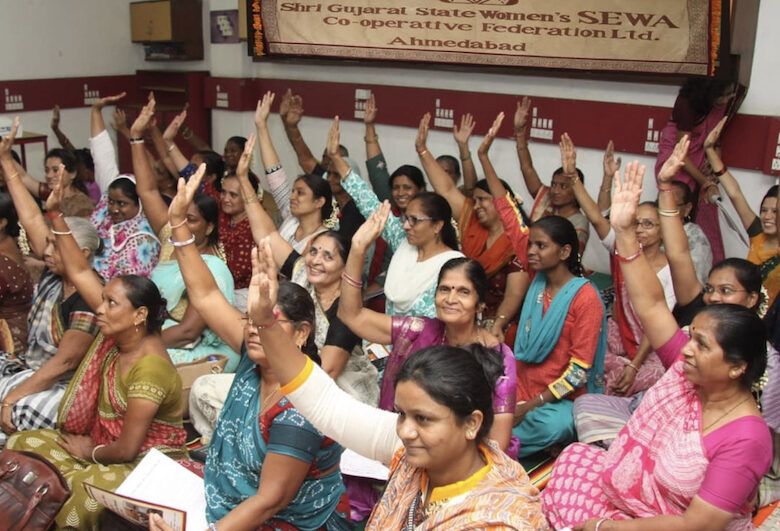Can Blockchain Bridge the Trust Gap in SEWA’s Healthcare Network?

Blockchain technologies are often promoted as transformative, though its role in addressing real-world inequities remains uncertain—frequently cast as a solution in search of a problem, more at home in speculative finance than in public service. Much of that skepticism is warranted. Yet a recent collaboration between the SEWA Federation and the Algorand Foundation marks a case where the technology is being applied not to imagined futures, but to the concrete, everyday challenges of marginalized women.
Mirai Chatterjee, Director of SEWA’s Social Security team, recently announced a blockchain-backed initiative aimed at addressing a thorny problem: the lack of documentation that excludes many from India’s welfare systems. Chatterjee has long worked at the intersection of health, insurance, and livelihood security for women in the informal economy—where missing paperwork can mean the difference between receiving care and going without. The initiative is being implemented through the SEWA Federation, a network of 106 women-led cooperatives representing over 400,000 members. It is part of the broader SEWA movement, a union of 3.5 million informal workers across India—one of the largest of its kind globally.
To confront the exclusion caused by missing or unreliable records, the project centers on the creation of a Digital Health Passport—a blockchain-based record that stores key health data securely and can be accessed by women through SEWA’s existing network of community centers. These digital records are designed to be portable, verifiable, and protected from tampering, offering a more stable link to services like insurance, public health programs, and government entitlements.
At the center of this pilot are SEWA Shakti Kendras —community resource centers where women come not only for health-related assistance but also to access information about government schemes, social security benefits, and employment opportunities. These hubs have long operated with pen-and-paper records. These documents were often misplaced, damaged, or lost—disruptions that compounded the challenges women already faced in navigating healthcare and welfare systems. The manual methods, vulnerable to error and delay, frequently reinforced the very barriers they were meant to overcome. By shifting to blockchain, these centers are experimenting with a system that offers secure, verifiable health credentials—potentially streamlining everything from claims processing to benefit distribution.
What makes this effort salient is not the technology itself, but the institutional context in which it’s being tested. There’s nothing particularly flashy about the blockchains in this case—they are not being used to disrupt, scale, or reimagine. It’s being judged by its present utility: making health records secure, verifiable, and portable.
The implications reach beyond healthcare. If the model proves workable, it could extend to other areas where informal workers are locked out—insurance onboarding, subsidies, or pension access. But it also raises a deeper question: Can technology, designed by and largely for elite systems, adapt meaningfully to grassroots realities?
This is not a story about blockchains saving the world. It’s a case study in cautious optimism—about using technology not as a silver bullet, but as a well-placed lever.